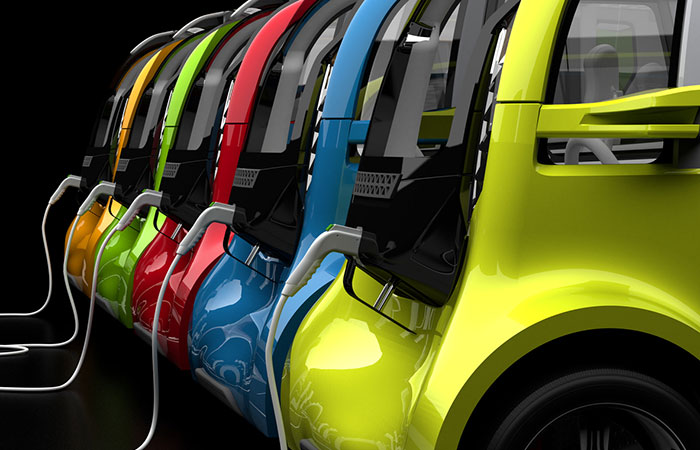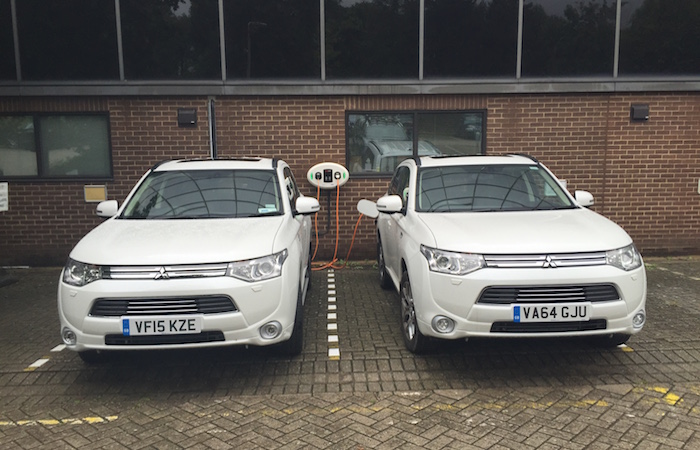
Need to know
- The government is investing in both electric vehicle (EV) and autonomous vehicle (AV) technologies and infrastructure.
- However, electric vehicles will not take off until concerns about the distance these are able to travel between charges is fully overcome and employees also accept a change of driving mindset.
- There are a range of complex insurance, regulatory and trust issues that will need to be worked through around autonomous vehicles before they become accepted, irrespective of how quickly the technology advances.
As anyone who grew up watching television shows such as The Jetsons or Space 1999 will undoubtedly be able to vouch, trying to predict the future, let alone future travel, is fraught with difficulty. Will we in years to come be zipping around in floating cars, Star Wars-like, all clad in Bacofoil?
The reality, of course, is that no one knows. There are blue-sky concepts such as architect Lars Hesselgren’s futuristic car tube, which has envisaged people travelling beneath city streets in automated electric virtual trains. Or Elon Musk’s hyperloop, where pod-like vehicles will propel people through reduced-pressure tubes.
Yet, within all this futuristic crystal ball gazing, it is possible to glimpse aspects of employees’ driving futures, both in terms of electric vehicles (EVs) and, undoubtedly further ahead, autonomous or driverless vehicles (AVs). In turn, this can give at least a sense of what the future of company car schemes might look like.
Investment in developing technology
One certainty is that the government is putting cash and commitment behind both these innovations. Last October, for example, it announced a £35m package to boost the uptake of ultra-low emission vehicles (ULEVs), including money to accelerate the spread of electric vehicle charge-points. Then, in the Budget in March 2017, Chancellor Philip Hammond pledged £270m to support the development of disruptive technologies, including around driverless vehicle and electric vehicles.
More widely in the UK there have been trials of driverless vehicles on city streets, admittedly as yet very tightly prescribed, in places such as Milton Keynes, London and Oxford.
So, where is this all going? Looking firstly at electric vehicles, it is clear this is a technology that, if not yet exactly mainstream, is certainly nascent. Statistics from the Society of Motor Manufacturers and Traders (SMMT) found that, as at May 2017, since the launch of the plug-in car grant in January 2011, there have been 100,041 eligible cars registered. The scheme currently provides a grant of up to £4,500 towards the purchase of an electric plug-in car, depending on the model.
From a company car perspective, the fact ULEVs, including electric vehicles, have been excluded from the government’s changes to salary sacrifice arrangements means these will continue to be a popular option, says James Malia, director of employee benefits at Sodexo Benefits and Rewards Services. But for electric vehicles to become mainstream will require a change of mindset among company car drivers.
“There may be an element of people realising they have to slow down, to take things more easily,” says Malia. “With an EV, if it is going to take an hour-and-a-half to charge [a] car, then [employees] have to take [their] time rather than just filling up, grabbing a coffee and carrying on.”
The desire is there among many employers but ‘range anxiety’, that is how far an electric vehicle can travel between charges, remains a concern, adds Lauren Pamma, head of consultancy at Lex Autolease. “A lot more [employees] would, I think, be happy to drive EVs if they knew they would be able to get from A to B, if that range anxiety was able to be overcome,” she says. “But the infrastructure is still very much in its infancy.”
The fact new benefit-in-kind (BIK) rates designed to boost the ULEV market do not come in to effect until 2020-21 may mean progress until then will be in baby steps, says Paul Gilshan, chief marketing officer at Tusker. Hybrids are likely to remain an attractive half-way house for many employers.
Leo Taylor, head of product management at Alphabet GB, says: “I think we will see a gradual shift from the consumer perspective, and that will, in time, move over into corporate fleets. But it will, in part, be dependent on what sort of driving someone is doing. If [they are], say, driving from depot to depot and can charge at each stop, that’s going to be more attractive for an electric vehicle than if [they are] doing a lot of time up and down the motorway.”
What, then, about autonomous or driverless vehicles? According to research published by Lex Autolease in April 2017 there is still a way to go before driverless vehicles become accepted. Last year saw only a 1.3% rise in support for fully autonomous vehicles from company car drivers. Yet, intriguingly, the number of fleet decision-makers who said they expected to see driverless vehicles on the roads within 10 years jumped by 17% year-on-year.
It is a question of when driverless vehicles will take off, rather than if, says Pamma. And, in terms of company cars, if it gets to the stage where an autonomous vehicle can turn up outside an employee’s house and do their journey, will they even need their own car anymore? Could employers or perhaps local councils, simply operate a pool of cars, perhaps like a fleet of taxis? “But that, even if it were to happen, is still a long way off,” adds Pamma.
Additional issues
There are also complicated non-car issues that will need to be worked through. There are, for example, questions around insurance and who will be responsible in the event of an accident involving a driverless car. There are even moral dilemmas, such as who should the software protect: the driver, other drivers, pedestrians and so on?
“If the proper insurance products are not attached, then it is going to be a really difficult sell,” says Alphabet’s Taylor. “Will, for example, autonomous vehicles be allowed on all roads or just some? Will they be governed by different rules or regulations? We just do not have that clarity right now. The technology is there, but it is the infrastructure that is not.”
 Panasonic provides electric company cars and free charging points to employees
Panasonic provides electric company cars and free charging points to employees
Almost 20% of electronics manufacturer Panasonic’s 170-strong UK company car fleet is made up of hybrid or electric vehicles (EVs), supplied through provider Alphabet on a contract hire or salary sacrifice basis.
Yet, while very much an evangelist for electric vehicles, Jason Plummer, senior manager at Panasonic, concedes electric is not going to suit all company car drivers.
“For a lot of people, it’s a question of taking a hybrid, either petrol or diesel, rather than a pure electric vehicle,” he says. “But [we] do need to recognise that an EV is definitely not right for everyone. We look at mileage profiles and, if someone is doing, say, 20,000 miles a year an electric vehicle, in reality, is not going to work; it’s going to be something [they’re] taking as just a tax break, not because it is having the least impact on the environment.”
Advances in technology will help to mitigate range anxiety in future, and the government’s investment in charging points will help, but it is only a start, says Plummer. “The charging infrastructure does have to get better, and the government does need to invest significantly more than it is,” he says.
“I also think the government should look at schemes or incentives that encourage employers to generate the energy to feed charging points themselves,” he adds.
Panasonic, for example, has a 50-kWh solar electric array on the roof of its head office in Bracknell, Berkshire, which means it can offer free electric vehicle charging.
When it comes to autonomous vehicles (AVs), these are likely to have a place in company car schemes of the future, although there is also likely to be a considerable transition period, says Plummer.
“[I] can see autonomous vehicles working in big cities. For example, I’ve spent five hours today driving in and out of London. But if there was, say, a big park and ride off the [motorway] from which you could get an autonomous vehicle into the city and continue working, I think that would be very attractive for a lot of people.
“But I don’t see autonomous vehicles becoming a replacement for everyday driving and everyday journeys, certainly at least not for the next 10 years, or even more.”